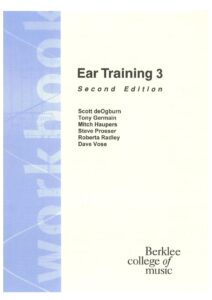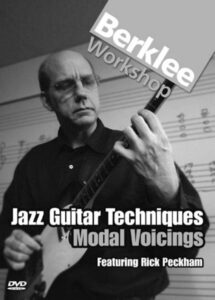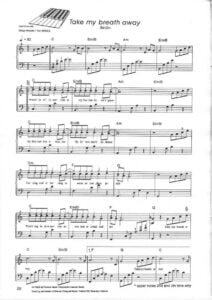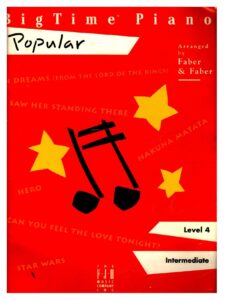Table of Contents
Astor Piazzolla – Oblivion (piano solo ver.) has been added to our sheet music Library.

Browse in the Library:
| Artist or Composer / Score name | Cover | List of Contents |
|---|---|---|
| Benjamin Waldmann Circles |
 |
|
| Benny Carter Vol 87 – When Lights Are Low – Play Along with MP3 audio tracks |
 |
Benny Carter Vol 87 – When Lights Are Low – Play Along with MP3 audio tracks |
| Benny Golson Stablemates (Lead Sheet) | Stablemates (Lead Sheet) sample | |
| Benny Golson Stablemates (Piano Solo Transcription) | Stablemates (first page) | |
| Benny Hill Show Theme (Yakety Sax) by Randy Randolph and James Rich |
 |
|
| Benny Hill Show Theme (Yakety Sax) By Randy Randolph And James Rich (Musescore File).mscz | ||
| Bepi De Marzi Signore Delle Cime Piano Solo Arr. |
 |
|
| Berens 50 Piano Pieces For Beginners, Op 70 |
 |
|
| Berens – 20 Children Studies, op 79 |
 |
|
| Berens – 50 Piano Pieces for Beginners, op 70 |
 |
|
| Berens – The School of Scales Chords & Embellishments Op 88 | Berens scales op 88 | |
| Berens – Training of the Left Hand, op 89 | Berens – Training of the Left Hand, op 89 | |
| Berio, Luciano – Folk songs (Full Score) |
 |
|
| Berio, Luciano – Gesti (score) |
 |
|
| Berio, Luciano – Sequenza IXb-sax alto |
 |
|
| Berio, Luciano – Sequenza VII for Oboe |
 |
|
| Berklee Harmony 1 by Barrie Nettles |
 |
|
| Berklee Harmony 1 by Barrie Nettles (Español) | Berklee Harmony 1 by Barrie Nettles (Español) | |
| Berklee Harmony 2 by Barrie Nettles |
 |
|
| Berklee Harmony 3 by Barrie Nettles |
 |
|
| Berklee Harmony 4 by Barrie Nettles |
 |
|
| Berklee Music Theory 2 |
 |
|
| Berklee – A Modern Method For Keyboard Study Vol 1 by James Progris |
 |
|
| Berklee – Jazz Composition Theory And Practice (Book) |
 |
|
| Berklee Basic Keyboard 1 William Davies |
 |
|
| Berklee – William Leavitt Classical Studies For Pick Style Guitar |
 |
|
| Berklee (Guitar method) William Leavitt – Melodic Rhythms for Guitar (pdf+AUDIO MP3) |
 |
|
| Berklee Basic Guitar Phase 1 by William Leavitt |
 |
|
| Berklee Book Of Jazz Harmony |
 |
|
| Berklee Ear Training 1 Workbook (2002) Book |
 |
|
| Berklee Ear Training 1 Workbook (2013) 2nd Edition (BOOK) |
 |
|
| Berklee Ear Training 2 Workbook (2013) (BOOK) |
 |
|
| Berklee Ear Training 3 Workbook (2006) Book |
 |
|
| Berklee Ear Training 4 Workbook (2007) Book |
 |
|
| Berklee Harmony 1 to 4 (4 theory books) |
 |
|
| Berklee Instant Keyboard Method |
Book Theory  |
|
| Berklee Jazz Guitar Arrangements |
 |
berklee jazz guitar |
| Berklee Jazz Guitar Chord Dictionnary |
 |
Berklee Jazz Guitar Chord Dictionnary |
| Berklee Jazz Piano Ray Santisi |
 |
Berklee jazz piano sheet music book |
| Berklee Jazz Standards for Solo Piano (Christopherson, Robert) Piano Jazz |
 |
|
| Berklee Modal Harmony Jazz |
 |
|
| Berklee Music History Handbook |
 |
|
| Berklee Music Theory Book 1 |
 |
|
| Berklee Orchestration Handbook 1 Songwritting & Business for Film, TV & Video Games |
 |
Berklee – orchestration handbook |
| Berklee Piano Handbook |
 |
|
| Berklee Practice Method Guitar with Tablature |
 |
|
| Berklee Practice Method Keyboard |
 |
|
| Berklee Press – Ted Pease & Ken Pullig – Modern Jazz Voicings ( with MP3 tracks) |
 |
Modern Jazz voicings |
| Berklee School of Music – Arranging Music (complete course) |
 |
|
| Berklee Shares – Jazz Composition Theory and Practice | Book Theory | |
| Berklee Shares – Melody – Some Basics | Book Theory | |
| Berklee Shares – Songwriter’s Workshop – Writing A Chorus | Book Theory | |
| Berklee Workshop Jazz Guitar Techniques Modal Voicings Featuring Rick Peckham |
 |
|
| Berlin – Take My Breath Away (Piano Vocal) |
 |
|
| Bernard Herrmann Madeleine Theme from VERTIGO |
 |
|
| Bernard Herrmann PSYCHO (Prelude) piano solo |
 |
|
| Bernard Herrmann Psycho Prelude |
 |
|
| Bernard Herrmann Scene D’amour from VERTIGO |
 |
|
| Bernard Herrmann Taxi Driver |
 |
|
| Bernard Lavilliers carnets De Bord songbook |
 |
Bernard Lavilliers carnets De Bord songbook Contenu — Bernard Lavilliers carnets De Bord songbook |
| Bernat Vivancos Si l’amour |
 |
|
| Bernat Vivancos El Cant Dels Ocells |
 |
|
| Bert Kaempfert Piano Album |
 |
Bert Kaemfert piano album |
| Bert McCracken – Sometimes I Just Go For It | ||
| Bertini – 24 Etudes Op. 29 | Bertini etudes op 29 | |
| Bertini – 25 Etudes Faciles Op.100 | Bertini op 100 | |
| Besame mucho (Andrea Bocelli) | ||
| Bésame Mucho (Bolero Violin Guitar And Lyrics) Guitarra Y Letra Consuelo Velázquez (Musescore File) Musescore File.mscz | ||
| Bésame Mucho (Bolero – Guitar And Lyrics) Guitarra Y Letra Consuelo Velázquez (Musescore File).mscz | ||
| Besame Mucho, Bolero by Consuelo Velázquez (Piano Solo partitura, sheet music, Noten, partition) |
 |
|
| Bésame Mucho, Bolero by Consuelo Velázquez (Piano Solo partitura, sheet music, Noten, partition).mscz | ||
| Best Acoustic Songs for Easy Guitar – sheet music with Tablature |
 |
Best Acoustic Songs for Easy Guitar – sheet music |
| Best of Blues Piano (Signature Licks keyboard). 14 songs |
 |
Best Of Blues Piano  |
| Best Of Jazz Guitar (Guitar Songbook) with embebed audio MP3 (Signature Licks) ( by Wolf Marshall) (with Tablature) |
 |
Best Of Jazz Guitar (Guitar Songbook) |
| Best Of Modern Rock For Guitar with Tablature |
 |
Best Of Modern Rock For Guitar |
| Best Of Russian Rock |
 |
Best Of Russian Rock |
| Best Rock Songs 2000-2005 Piano-vocal-chords |
 |
Best Rock Songs 2000-2005 Piano-vocal-chords |
| Best Smooth Jazz Jazz Piano Solos Series Volume 50 21 selections |
 |
Best Smooth Jazz Jazz Piano Solos Series Volume 50 21 selections |
| Best Songs Ever – 7th edition (Piano Vocal Guitar sheet) |
 |
The Best Songs Ever Piano vocal guitar |
| Best Songs Of Piano Bar Easy Piano |
 |
best songs of piano bar |
| Bethena – A Concert Waltz – Scott Joplin – 1905.mscz | ||
| Bette Midler – The Rose | ||
| Bette Midler – The Wind Beneath My Wings | ||
| Betty Carter Baby, It’s Cold Outside The New Real Book 2 | Betty Carter Baby, It’s Cold Outside The New Real Book 2 | |
| Betty Carter Jazz Ain’t Nothin’ But Soul |
 |
|
| Betty Carter Spring Can Really Hang You Up The Most | Betty Carter Spring Can Really Hang You Up The Most | |
| Betty Carter Tight |
 |
|
| Beverly Hills Cop – Axel F – Harold Faltermeyer | ||
| Bewitched – by Rodgers & Hart |
 |
|
| Beyonce – If I Were A Boy | ||
| Beyonce B’day |
 |
Beyonce B’day |
| Beyonce Dangerously In Love |
 |
Beyonce Dangerously In Love |
| Beyonce Songbook – Beyonce sheet music Piano Vocal guitar |
 |
Beyonce Songbook – Beyonce sheet music |
| Beyond And Before Progressive Rock Since The 1960s By Paul Hegarty, Martin Halliwell (Book) |
 |
|
| Beyond Slonimsky Melodic Patterns For Guitar |
 |
|
| Beyond The Art Of Finger Dexterity – Reassessing Carlo Czerny (Book) |
 |
|
| Big Book Of Classical Music 100 Of The World’s Favorite Pieces (Piano Solo, Sheet Music) |
 |
Big Book Of Classical Music 100 Of The World’s Favorite Pieces (Piano Solo, Sheet Music) |
| Big Book Of Wedding Music, The ( Sheet Music) |
 |
Big Book Of Wedding Music, The ( Sheet Music) |
| Big Fish Conductor’s Score The Musical Piano Vocal Score by Andrew Lippa |
 |
|
| Big Fish Fight The Dragons Big Fish The Musical by Andrew Lippa |
 |
|
| Big My Secret Michael Nyman (From ‘the Piano’) (Musescore File).mscz | ||
| Biggest Pop Hits 1996 1997 Piano Vocal Guitar Chords |
 |
Biggest Pop Hits 1996 1997 Piano Vocal Guitar Chords |
| Bigtime Piano Jazz & Blues Level 4 Intermediate |
 |
Bigtime Piano Jazz & Blues Level 4 Intermediate |
| Bigtime Piano Popular Level 4 Intermediate |
 |
Bigtime Piano Popular Level 4 Intermediate |
| Bigtime Piano Rock N Roll Level 4 Intermediate |
 |
Bigtime Piano Rock N Roll Level 4 Intermediate |
| Bill Broonzy – Blues And Ragtime Guitar Big Bill Broonzy (sheet music and TAB) |
 |
Bill Broonzy – Blues And Ragtime Guitar Big Bill Broonzy (sheet music and TAB) |
| Bill Dobbins – BLUES The Jazz Workshop Series |
 |
Bill Dobbins – BLUES The Jazz Workshop Series (Standards & Originals All Blues |
| Bill Dobbins – Jazz Arranging and Composing |
 |
Jazz arranging and composing |
| Bill Dobbins – The Contemporary Jazz Pianist V. 1 |
 |
Bill Dobbins – The Contemporary Jazz Pianist Vol.1 |
| Bill Dobbins – The Contemporary Jazz Pianist V. 3 |
 |
contemporary jazz pianist vol 3 |
| Bill Dobbins – The Contemporary Jazz Pianist Vol. 2 |
 |
Bill Dobbins – The Contemporary Jazz Pianist Vol.2 |
| Bill Dobbins – The Contemporary Jazz Pianist Vol.4 |
 |
Bill Dobbins – The Contemporary Jazz Pianist Vol.4 |
| Bill Dobbins Classic Standards Series Piano | Bill Dobbins Classic Standards Series Piano | |
| Bill Dobbins The Jazz Workshop Series Vol 1 Modal Jazz |
 |
|
| Bill Douglas Azure | Bill Douglas Azure | |
| Bill Douglass Autumn song | Autumn song | |
| Bill Douglass Prelude | Bill Douglass Prelude | |
| Bill Evans Jazz Music For Classical Guitar |
 |
Bill Evans Jazz Music For Classical Guitar |
| Bill Evans Alice In Wonderland |
 |
|
| Bill Evans Autumn Leaves, Solo Transcription | Bill Evans Autumn Leaves, Solo Transcription |
Astor Piazzolla
“Music is the most direct art, it enters through the ear and goes to the heart.”
Born on March 11, 1921 in Mar del Plata, Buenos Aires province. He was a bandoneon player and composer.
His contact with music began in New York, where his family lived between 1925 and 1936. At the age of eight, his father gave him his first bandoneon , and he began to take classes with Andrés D’Aquila; he made a recording on acetate when he was only ten years old, without commercial purposes. In 1933, he studied music with the Hungarian pianist Bela Wilda, who introduced him to the sound universe of Bach.
The following year, he met Carlos Gardel and quickly became friendly with him. Gardel heard him play and offered him to participate and play several songs in the film El día que me quieras; in which he played a newsboy. He was also invited to the tour of America in which Gardel lost his life along with his team; but, given his young age, he did not travel because he did not have permission.
In 1936, his family returned to Mar del Plata, and Astor participated in various ensembles and became acquainted with the work of the Elvino Vardaro sextet, which influenced him definitively. Determined to explore tango, he moved to Buenos Aires at the age of seventeen and, shortly after, he achieved his goal: to join the Aníbal Troilo orchestra , first as a bandoneonist and occasional pianist and, later, as an arranger for the orchestra.
Please, subscribe to our Library.
If you are already a subscriber, please, check our NEW SCORES’ page every month for new sheet music. THANK YOU!
He continued his studies in academic music with Alberto Ginastera and, in piano, with Raúl Spivak. His arrangements distanced him more and more from classical tango. Around 1944, he left the Troilo Orchestra to direct the orchestra that accompanied the singer Francisco Fiorentino until 1946, when he composed El desbande, considered by himself his first tango with a different formal structure.
He formed his own orchestra, which he disbanded in 1949, and began writing music for films. He moved away from the bandoneon and approached jazz: the search for a different style led him to deepen his musical studies.
Between 1950 and 1954, he composed works clearly different from the conception of tango up to that time ( To show off , Tanguango , Prepare , Contrabajeando , Triunfal , What will come ), and began to define his style. Also at this time, he wrote pieces of music cultured, such as Rhapsody of Buenos Aires (1952) and Buenos Aires, three symphonic movements (1953). For the latter, he won the Fabien Sevitzky Prize, and the French Government awarded him a scholarship to study in Paris with the famous musical pedagogue Nadia Boulanger, who convinced him to continue on the path of tango:
«Astor, your scholarly works are fine written, but here is the real Piazzolla, never abandon him».
The fellowship lasted for almost a year, and in that time, he formed a string orchestra with Paris Opera musicians Martial Solal and Lalo Schifrin. With Schirfrin, he recorded Two Argentinians in Paris (1955).
Upon his return to Argentina, he summoned top-class musicians and formed the Octeto Buenos Aires. It was made up of Enrique Mario Francini and Hugo Baralis, on violins; Roberto Pansera, on bandoneon; José Bragato, on cello; Aldo Nicolini, on bass; Horacio Malvicino, on electric guitar, and Atilio Stampone, on piano.
Various versions of the Octet had a decisive influence on the future evolution of tango, due to their rhythmic and contrapuntal novelties.
Best Sheet Music download from our Library.
When his father died in 1959, he composed perhaps his most beautiful work in his tribute: Goodbye, Nonino . In 1960, after a stay in the United States, where his style was presented as jazz-tango, he formed a quintet that included musicians such as Elvio Bardaro, Dante Amicarelli, Antonio Agri, Horacio Malvicino, Oscar López Ruiz, Kicho Díaz, Osvaldo Manzi and Cacho Tirao.
In 1968, he composed, with the poet Horacio Ferrer, the opera María de Buenos Aires , for eleven instruments, female and male reciter and singers. In 1969, she began to write, also together with Ferrer, simpler songs for the voice of Amelita Baltar, her partner in those years.
They composed Balada para un loco , which became a great popular success that was followed by others. In 1972, after a heart attack, she decided to settle in Italy for five years. She formed the Conjunto Electronico, recorded Libertango and experienced her approach to jazz-rock. In 1974, she recorded Summit with saxophonist Gerry Mulligan; and, a year later, after the death of Aníbal Troilo, the album Suite Troileana . In 1976, she appeared at the Gran Rex theater with her play De ella 500 Motivaciones ; and, in 1977, with a series of concerts at the Olympia in Paris.
In 1978, she returned with her Quintet and consolidated her international fame with tours of Europe, South America, the United States and Japan. In 1983, at the Teatro Colón, he offered a program entirely composed by him.
In 1984, he performed with the singer Milva and produced the album Live at the Bouffes du Nord ; in Vienna, she recorded Live in Wien with the Quintet. In 1985, he was named an Illustrious Citizen of Buenos Aires ; and he premiered, in Belgium, at the Fifth International Guitar Festival, the Concert for Bandoneon and Guitar: Homage to Liège , conducted by Leo Brouwer.
In 1986, he received the César Award in Paris for the soundtrack of the film El exilio de Gardel ; and he recorded live, together with Gary Burton, Suite for Vibraphone and New Tango Quintet , at the Montreux jazz festival (Switzerland). In 1987, he presented himself with a massive recital in Central Park (New York). In 1988, he recorded his last album with the La Camorra Quintet. In 1989, he formed Sexteto Nuevo Tango, with which he performed at the Teatro Ópera, toured, and appeared as a soloist until its dissolution at the end of that year.
On August 4, 1990, in Paris, he suffered a cerebral thrombosis that left him bedridden. He died on July 4, 1992, in Buenos Aires.
